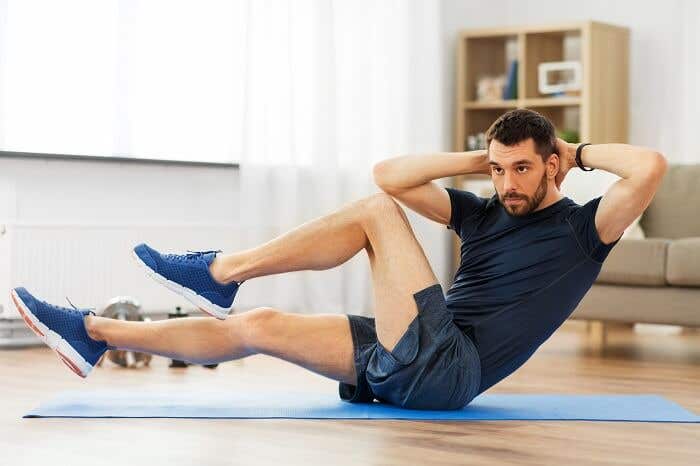Researchers discover the best exercise for managing type-1 diabetes
Discover how personalized exercise routines can help type-1 diabetes patients manage their blood sugar more effectively, according to recent research.

The team investigated whether different types of exercise could help minimize these blood sugar fluctuations. (CREDIT: U.S. Dermatology Partners)
A recent study has pinpointed the best exercise types for managing type-1 diabetes, shedding light on how physical activity can be tailored to individual needs. Conducted by the Universidade Federal do Vale do São Francisco in collaboration with Staffordshire University, the research aimed to optimize exercise routines for diabetic patients.
Dr. Pooya Soltani from Staffordshire University highlighted the importance of this work, stating, "This study is important because diabetic patients often lack motivation to exercise as a means of managing their condition."
One major reason for this reluctance is the potential for exercise to cause blood sugar drops, which can lead to discomfort and demotivation. To address this, the team investigated whether different types of exercise could help minimize these blood sugar fluctuations.
The study involved 19 participants with type-1 diabetes, who completed two randomized trials to examine the effects of interval and continuous exercise on their blood sugar and cardiovascular responses. Each participant performed 30 minutes of moderate aerobic exercise on a treadmill.
The interval session alternated between 1-minute intervals at 40% and 60% of the individual's estimated maximum oxygen consumption (VO2max), while the continuous exercise session was maintained at 50% of VO2max.
During both trials, researchers measured heart rate, blood pressure, and blood glucose levels at three points: before, immediately after, and 20 minutes post-exercise. Additionally, participants rated their perceived exertion and how much they enjoyed the activity.
Related Stories
The results revealed that cardiovascular responses, enjoyment, and exertion levels were similar across genders and exercise types. However, the study identified notable differences in blood glucose changes between men and women.
Men experienced greater blood glucose reductions after both interval and continuous aerobic exercise, with the most significant drops occurring immediately after exercise and continuing 20 minutes post-workout. Women, on the other hand, only saw reduced glucose levels following continuous exercise.
These findings suggest that exercise prescriptions for type-1 diabetic patients should consider gender-specific differences to prevent excessive drops in blood sugar, which could lead to hypoglycemia.
Dr. Jorge Luiz de Brito-Gomes from the Universidade Federal do Vale do São Francisco elaborated on the implications of the study. "For male patients, interval exercise, such as short bursts of walking, is preferable when starting with low blood sugar levels," he explained. "Continuous exercise, like running, is more suitable for those with higher initial blood sugar levels. These strategies can help avoid sudden blood sugar drops."
For female patients, both interval and continuous aerobic exercises appear effective, offering flexibility when determining the most suitable form of exercise.
The researchers hope these insights will lead to more personalized exercise recommendations, particularly for men with irregular physical activity levels. By tailoring workouts based on initial blood sugar levels and gender, patients can better manage their condition and reduce the risk of exercise-induced hypoglycemia.
General types of exercise that are good for type 1 diabetes patients
Managing Type 1 diabetes through exercise is important because it helps with glucose control, insulin sensitivity, cardiovascular health, and overall well-being. Here are some exercise types that are particularly beneficial for people with Type 1 diabetes:
- Aerobic Exercise (Cardio)
- Activities such as walking, jogging, swimming, and cycling are excellent for managing Type 1 diabetes. These exercises can lower blood glucose levels and improve cardiovascular fitness. Regular aerobic exercise has been shown to improve insulin sensitivity and reduce long-term risks associated with diabetes, such as heart disease.
- Strength Training
- Weightlifting or resistance exercises using body weight, bands, or free weights help in increasing muscle mass, which improves insulin sensitivity. Building muscle allows the body to use glucose more efficiently. Strength training also helps with glucose metabolism for hours after the workout.
- High-Intensity Interval Training (HIIT)
- HIIT involves short bursts of high-intensity exercise followed by rest or low-intensity periods. This type of workout can improve cardiovascular health, insulin sensitivity, and glucose regulation. It is especially effective for managing blood sugar spikes post-exercise.
- Flexibility and Balance Exercises
- Yoga, Pilates, and Tai Chi focus on flexibility and balance, which reduce stress levels and can improve glucose levels over time. These exercises are lower in intensity but helpful in stress management, an important factor in maintaining stable blood sugar levels.
- Team Sports
- Playing soccer, basketball, or tennis offers the benefits of aerobic exercise combined with social interaction, which can improve mental well-being. These activities promote better cardiovascular fitness, insulin sensitivity, and glycemic control.
It’s important for people with Type 1 diabetes to monitor their blood glucose levels before, during, and after exercise to prevent hypoglycemia or hyperglycemia. A combination of aerobic, strength, and flexibility training can provide optimal benefits for managing diabetes.
Please consult a medical professional before beginning any type of exercise program.
Note: Materials provided above by The Brighter Side of News. Content may be edited for styland length.
Like these kind of feel good stories? Get The Brighter Side of News' newsletter.
Joshua Shavit
Science & Technology Writer | AI and Robotics Reporter
Joshua Shavit is a Los Angeles-based science and technology writer with a passion for exploring the breakthroughs shaping the future. As a contributor to The Brighter Side of News, he focuses on positive and transformative advancements in AI, technology, physics, engineering, robotics and space science. Joshua is currently working towards a Bachelor of Science in Business Administration at the University of California, Berkeley. He combines his academic background with a talent for storytelling, making complex scientific discoveries engaging and accessible. His work highlights the innovators behind the ideas, bringing readers closer to the people driving progress.



